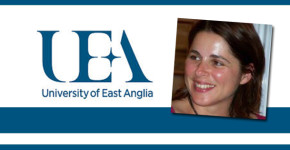 Many factors influence how a child understands and interprets the human body and its related physical behaviors.
Many factors influence how a child understands and interprets the human body and its related physical behaviors.
Georgia Panagiotaki, lecturer in psychology at the University of East Anglia, studied a diverse pool of children to make conclusions about their bodily comprehension.
Dr Georgia Panagiotaki is a lecturer in psychology at the Norwich Medical School, University of East Anglia, UK. Her research focuses on the development of children’s understanding of biology, in particular their ideas about the human body, health and illness, and the concepts of life and death. She received her PhD in Developmental Psychology from the University of Sussex in 2004.
Dr Gavin Nobes, the co-author on this study, is a Senior Lecturer in Developmental Psychology at the School of Psychology, University of East Anglia, UK. His research focuses on moral development and children’s understanding of science, in particular the acquisition of knowledge of the Earth, climate change, biology, health and illness. He received his PhD from the University of Bath in 1992
Drs. Panagiotaki & Nobes – Education and Cultural Experiences Shape Children’s Understanding of Life and the Human Body
How do 5 year-olds answer the question “what is the heart for” or “what would happen if someone did not have a brain?” Previous research suggests that children as young as 5 grasp the idea that the human body works to keep us alive. This ‘life theory’ enables them to make sense of related biological facts such as how the vital organs work and what happens when someone dies.
Our research aimed to identify the age by which children begin to understand how and why the human body works. It also explored the influence of education and culture on this understanding. We interviewed white British, British Muslim and Pakistani Muslim children, three groups with different educational and cultural experiences.
Our findings confirm the view that many changes in children’s thinking about life and the body happen between the ages of 4 and 7. Children in our three groups were equally good at understanding that the body works to maintain life, whether they lived in England and enjoyed relatively high standards of education, or in a deprived Pakistani village, with limited educational resources.
Despite these similarities, Pakistani children were better at linking the function of vital organs with life than British children. Direct experience with the life cycle of domestic animals may provide these children with learning opportunities that accelerated their understanding of the fact that without a heart or brain we die. However, British children were better at explaining the biological function of vital organs because they learn about them at school earlier and with better resources than their Pakistani counterparts.
An implication of this research is that direct experience is a powerful tool that can enhance even very young children’s biological understanding. But without the right educational input and teaching of specific biological facts this experience might not be enough.

